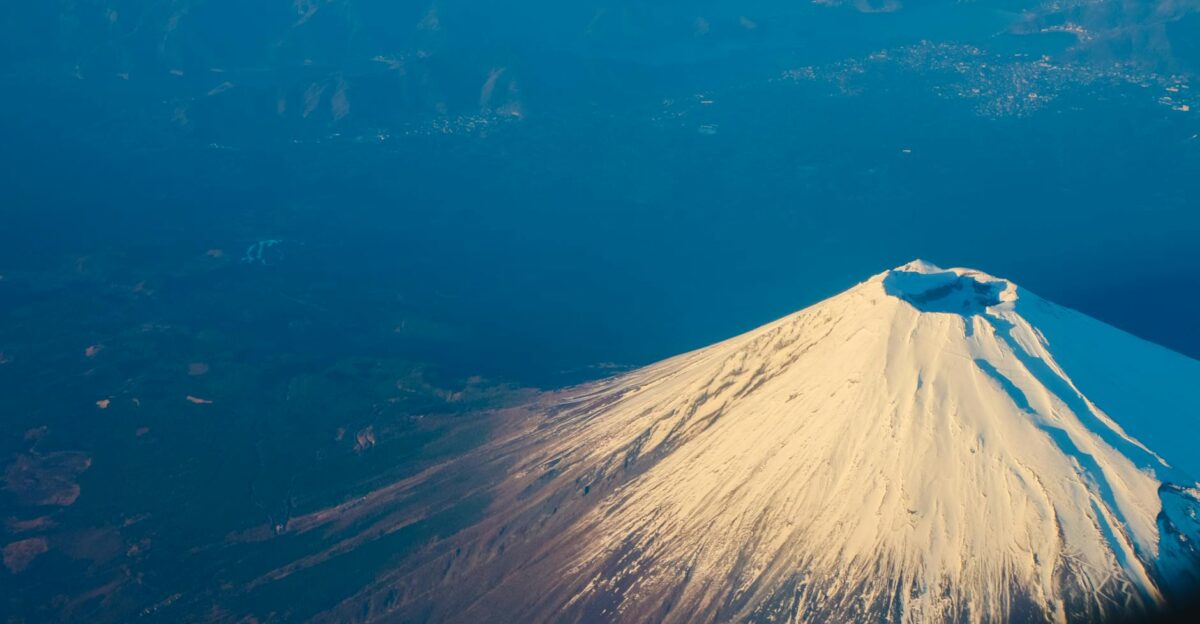
Scientists believe Mount Edgecumbe, a stratovolcano on Kruzof Island, Alaska, exhibits early signs of possible eruption.
The volcano has been dormant for around 800 years now, so these stirrings of life have raised alarm bells. According to the Alaska Volcano Observatory (AVO), Mount Edgecumbe has shown signs of movement beneath the surface.
The Scientific Breakthrough

Scientists from AVO and the Alaska Satellite Facility have used techniques like satellite imaging and mathematical modeling to track these small but important changes occurring at Mount Edgecumbe.
A study published in Geophysical Research Letters details rising magma levels since 2022. These rising magma levels started just four days after an earthquake swarm. Lead author Ronni Grapenthin noted, “That’s the fastest rate of volcanic deformation…reactivation of dormant volcanic systems is rarely observed.”
A Rare Reset in Geological Memory

The presence of geological layers and indigenous oral histories about Mount Edgecumbe tells the tale of an eruption around eight centuries ago. According to scientists and researchers alike, this is an unusually long time for a volcano to remain dormant.
The rarity of this dormancy poses some serious concerns, as these volcanoes could behave differently than others that have erupted in recent years. Mount Edgecumbe’s long-term dormancy adds a level of unpredictability to the mix.
Seismic Swarms as a Wake-Up Call

The Alaska Volcano Observatory’s satellite radars detected the presence of hundreds of small earthquakes beneath Edgecumbe from April 2022. This strongly suggests that magma is moving and rising.
AOV explained, “Intrusions of new magma under volcanoes do not always result in eruptions, but…if magma rises closer to the surface…advance warning”
While these magma disturbances aren’t solid evidence of eruption, they warrant increased observation.
Monitoring on the Ground

AVO, one of the USGS Volcano Hazards Program’s five observatories, began increasing its observation of Mount Edgecumbe in 2022. AVO installed a seismometer and GPS sensor on Kruzof Island to help detect even small-scale unrest in the region.
This was a proactive measure to ensure the region’s preparedness in case of an eruption. Being prepared for a natural disaster can help prevent some of the economic and social fallout that comes with it.
Will It Erupt?

The short answer is, not yet. Although the volcano may be showing stirrings of movement and activity, experts have revealed that there are no signs of imminent eruption.
Experts suggest that magma intrusions often stall and dissipate without reaching the surface, which is not a sign for immediate concern in this case.
Grapenthin notes that “prior to an eruption we expect more signs of unrest: more seismicity, more deformation…changes in patterns”.
Collective Anxiety

Collective anxiety describes a shared sense of fear and tension that’s often caused by unpredictable and precarious situations like a possible volcanic eruption.
According to a 2023 Journal of Anxiety Disorders review, disasters like volcanic eruptions can significantly drive anxiety due to disruption, uncertainty, and media amplification.
This is why leaders and scientists involved in these studies must be transparent, honest, and forthcoming with the public. Having contingency plans and public alerts is also a great way to help reduce this collective anxiety.
Comparing to Other Recharging Volcanoes

Other notable volcanoes have also shown signs of renewed magma presence, but have not erupted. The same can be true for Mount Edgecumbe.
Mount St. Helens in Washington has shown signs of magma intrusion since 2016 but remains stable.
Similarly, Iliamna Volcano near Anchorage has shown some signs of activity since 2025 but remains on a green alert.
Environmental & Community Impact

AVO has detailed hazard assessments and maps in place that will be massively helpful for the community and emergency responders in the case of an eruption. Mount Edgecumbe is situated in a fairly remote area that currently has no permanent residents.
However, an eruption could still have devastating effects on local wildlife, fisheries, and the local economy. This is why it’s crucial that the area is constantly monitored and that sensors and alert levels are regularly updated.
Scientific Opportunity & Innovation

Mount Edgecumbe’s reactivation has provided massive new opportunities for scientists and researchers. They have the chance to use new technologies like drones and advanced satellite remote sensing to track these changes in real time.
This could present new findings and understandings of magma intrusion from deep crust to surface.
The USGS Volcano Science Center has also revealed new seismic monitoring and AI detection advancements.
Public Awareness & Messaging

Many people may feel that updates about possible volcanic eruptions are fear-mongering, especially if they aren’t linked to hard-core evidence of an imminent eruption. However, knowledge is power.
Communication on these matters is key to preparedness and understanding a severe issue.
AVO and USGS stream regular updates, exercise GPS and seismic alerts, and maintain Volcano Notification Services so scientists, officials, and the public stay informed.
Conclusion

Mount Edgecume has been inactive for around 800 years, and its recent reactivation is a true testament to how unpredictable nature truly is.
Scientific advancements in monitoring have placed us in a favorable position, allowing us to be alert and ready for the worst-case scenario.
Whether or not it erupts, this event emphasizes the need for global volcanic observation and preparedness.






